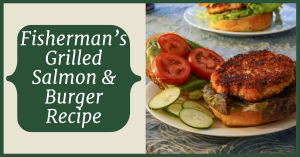
September 4, 2021
By Abby Rogerson, WSG Student Assistant
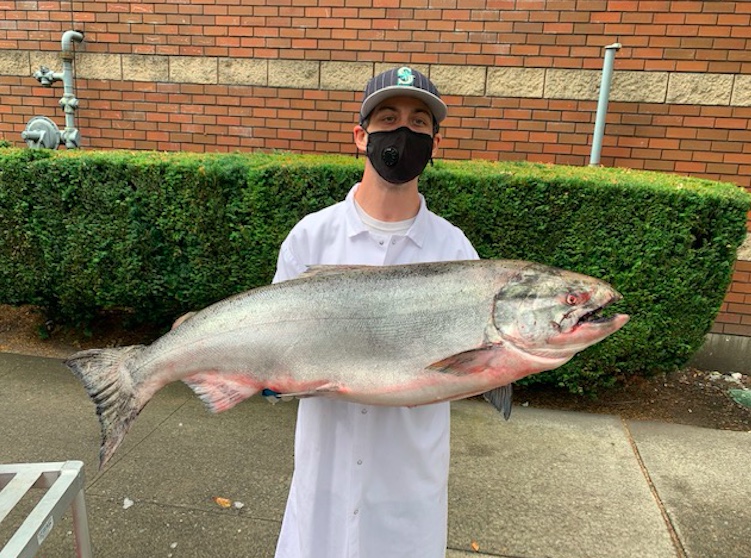
Vendor with Columbia River Chinook salmon. Photo credit: Robert Sudar
Robert Sudar landed his first salmon fishing gig thanks to his grandfather, who had been fishing commercially since the end of World War II. Fresh out of high school, he worked on purse seiners in the San Juans, catching pink and sockeye salmon en route to the Fraser River. Originally fishing was a way to earn some cash during college, but his involvement in and enthusiasm for the industry remains strong after 50 years. He explains, “there’s something about fishing that keeps you coming back.”
In the 80s, Robert moved to Longview, where he worked with gillnetters fishing primarily for Chinook and coho on the Columbia, while also doing some purse seining in Puget Sound. However, fishing, cleaning the catch, negotiating with vendors, and delivering to markets, all while also working as an engineer, was unsustainable. To ease the burden of this hectic schedule, he decided to just partner with fishermen on the Columbia, paying a premium for their catch and marketing it to vendors interested in high-quality, fresh fish. Robert boasts he generally delivers fish 24 hours after it’s pulled from the Columbia–sometimes managing to deliver a morning catch the afternoon of the same day.
This is how it works: on the boat, fishermen bleed the fish and pack it in ice; once ashore, Robert repacks it in new ice as he buys the fish, then cleans each fish and packs it in fresh ice a final time for its trip to market. While discussing why bleeding and icing on the boat is important, he explains “it’s out of respect for the fish,” since immediately bleeding the fish preserves its freshness. When asked by his fishing pals why he enjoys the less-glamorous task of cleaning the catch, his love for salmon shines through again: “I think each fish is interesting. I’m able to admire what I’m working with, like a woodworker appreciates woodgrain.”
Robert’s dedication to quality serves him well, considering he’s been supplying the same Seattle purveyors for the past 35 years. Yet, he measures success more by public appreciation for salmon. Robert envisions a Washington where everyone has access to local, in-season salmon: “It’s everyone’s resource. They’re a beautiful creature and we’re lucky to have them.”
Check out the recipe below for salt and pepper grilled salmon – the original source is linked here. Photos show grilled Chinook salmon from the Columbia River, taken by Robert’s son, Joseph Sudar.
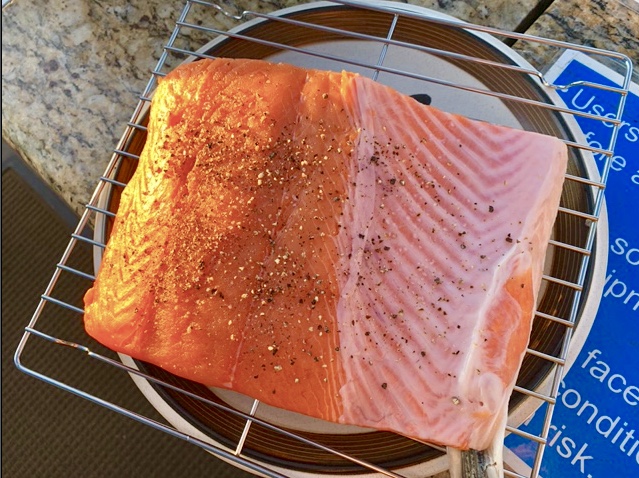
Photo credit: Joseph Sudar
Ingredients:
- 1 fillet Chinook (king) salmon, skin-on
- Olive oil
- Kosher salt
- Freshly cracked black pepper
- Vegetable oil
- Lemon wedges, for serving
Instructions:
Prepare the salmon. Run your finger along the center of the fillet, removing all pin bones with
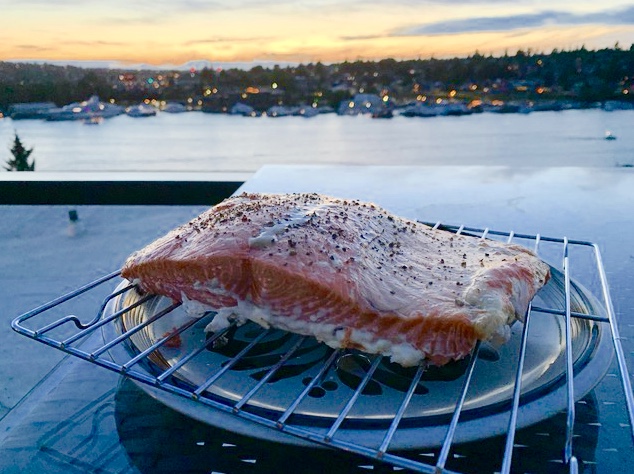
Photo credit: Joseph Sudar
tweezers. Leave the skin on and cut into equal portions, about 2-3 inches wide. Wrap the fillets in a paper towel and refrigerate for 15 minutes. Lightly coat the salmon with olive oil and season with salt and pepper.
Prepare the grill. Preheat to high heat. Clean and oil the grates. Once the grill reaches 450-500°F, place fillets on the grill diagonally to the grates, skin side up (raw flesh side down). Cover and let cook for about 4 minutes. Flip, cover, and let cook for a couple more minutes. If the fillets stick when you try to flip them, let cook for 30 second increments until they no longer stick. It is done when the flesh flakes easily and the center is still moist. If using a thermometer, 125°F produces medium-rare salmon and 145°F produces well-done salmon, which is recommended by the USDA. Serve with lemon wedges and enjoy!
BONUS RECIPE – Salmon Sliders
When filleting a salmon, some meat inevitably sticks to the skeleton. Salmon sliders are a great way to reduce waste and use this meat in a delicious way. If you buy a whole fish and have the vendor fillet it, they should be happy to give you the skeleton. Pro-tip: Another way to make the most of this meat is to poach the skeleton in simmering water. The meat will release from the bones, which you can enjoy on salads or mixed into dips.
Instructions:
- Using a spoon, scrape the skeleton clean. If you need more volume, use a meat grinder to grind more salmon, or chop it finely (bones removed, skin off).
- Mix browned onion, salt, pepper, and your favorite spices (e.g. fresh or dried dill) into the ground salmon. Shape into patties, keeping in mind they won’t shrink like beef patties.
- Lightly grease a stovetop grill pan or frying pan with vegetable oil and heat on medium-high.
- Cook until the first side is crisped up, then flip to finish cooking.
- Serve on light, fluffy buns with your favorite condiments and fixings.
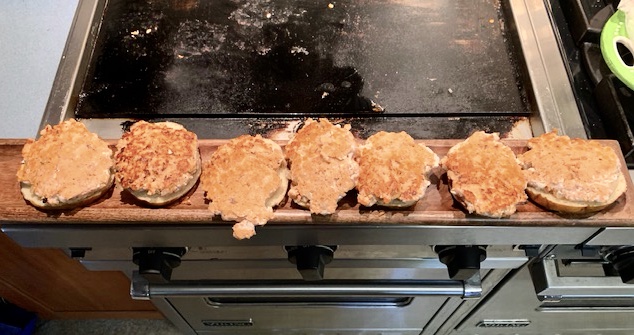
Photo credit: Robert Sudar
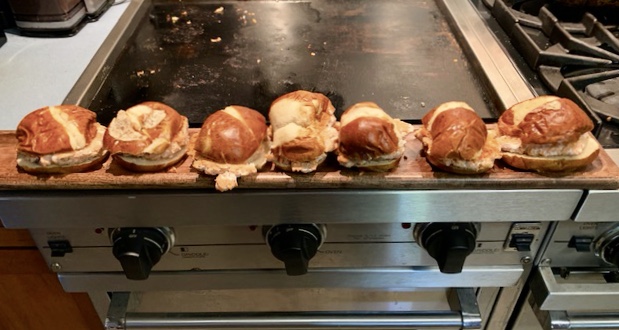
Photo credit: Robert Sudar
Recipe courtesy of Washington Sea Grant.
###
Washington Sea Grant, based at the University of Washington, helps people and marine life thrive through research, technical expertise and education supporting the responsible use and conservation of coastal ecosystems. Washington Sea Grant is one of 34 Sea Grant programs supported by the National Oceanic and Atmospheric Administration in coastal and Great Lakes states that encourage the wise stewardship of our marine resources through research, education, outreach and technology transfer.
Join the conversation: instagram.com/waseagrant and Facebook.com/WaSeaGrant.
SEP
2020